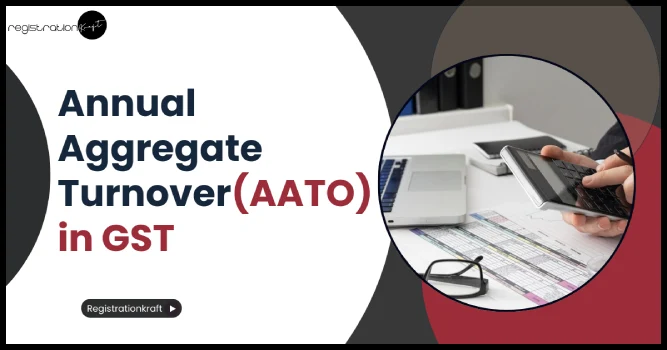What is Annual Aggregate Turnover (AATO) in GST

AATO in GST stands for Annual Aggregate Turnover. It is a crucial parameter for determining the taxpayer’s eligibility for GST registration, tax rates, compliance requirements, and various threshold limits established under the GST system.
If you’re curious to learn about what is annual aggregate turnover (AATO) in GST and how to calculate it, we recommend you to go through this article.
What is AATO in GST Regime?
Annual Aggregate Turnover (AATO) under GST refers to the total revenue earned by a business in a financial year. It includes all the taxable supplies, exempt supplies, exports and interstate supplies.
Aggregate turnover is the basic pre-requisite for GST registration. According to the GST law, any entity with an annual turnover of more than Rs. 40 lakh in a normal category state is required to register for GST. For special category states, any entity with an annual turnover exceeding Rs. 20 lakhs requires GST registration.
The Government of India recognizes 11 special category states under the GST regime: Arunachal Pradesh; Assam; Jammu and Kashmir; Manipur; Meghalaya; Mizoram; Nagaland; Sikkim; Tripura; Himachal Pradesh and Uttarakhand.
How to Calculate Annual Aggregate Turnover (AATO) in GST?
The following formula is used to calculate AATO in GST:
Aggregate Turnover = Value of all Taxable Supplies + Exempt Supplies + Exports + Interstate Supplies − Taxes and Inward Supplies under RCM (Reverse Charge Mechanism)
The components of AATO formula have been explained herein:
- Value of all taxable supplies includes the total value of goods and services on which GST is levied. It excludes tax components such as CGST, SGST and IGST.
- Exempt supplies refer to supplies that do not attract GST like raw agricultural produce and educational services. However, the AATO formula still includes them.
- Exports are those goods/services that are exported outside India. They are considered zero-rated supplies. AATO formula includes them even though no GST is charged.
- Interstate supplies are supplies of goods/services between different states. The Annual Aggregate Turnover formula includes them.
- The aggregate turnover excludes taxes like CGST, SGST and IGST collected on sales as they are not a part of the supply value.
- Inward supplies under RCM mean purchases where the recipient pays GST instead of the supplier. The GST Aggregate Turnover formula excludes the inward supplies.
Conclusion
Aggregate turnover for GST registration is important for determining a business’s obligation to adhere to the Goods and Services Tax laws. AATO ensures tax collection takes place in a proper manner and maintains transparency in the GST system. If you need assistance in GST registration, connect with Registrationwala. We’ll make sure your business is registered under the GST system as smoothly as possible.
Frequently Asked Questions (FAQs)
Q1. What is AATO?
AATO stands for Annual Aggregate Turnover. It refers to the total revenue a business earns in a financial year. It plays a crucial role in determining whether a company must comply with GST laws.
Q2. Does the Annual Aggregate Turnover determine whether a business requires GST registration or not?
Yes, the Annual Aggregate Turnover (AATO) determines whether a business requires GST registration or not. If AATO exceeds the GST threshold limit (Rs. 40 lakh for normal category states/Rs. 20 lakh for special category states), it becomes mandatory for a business to register under the GST regime.
Q3. How does the Annual Aggregate Turnover determine eligibility for the Composition Scheme under GST?
The Annual Aggregate Turnover is a key factor when it comes to evaluating eligibility for the Composition Scheme under GST. A business is eligible for the scheme if its AATO does not exceed Rs. 1.5 crore (in most states). It enables small taxpayers to pay GST at a lower rate.
Tags:




